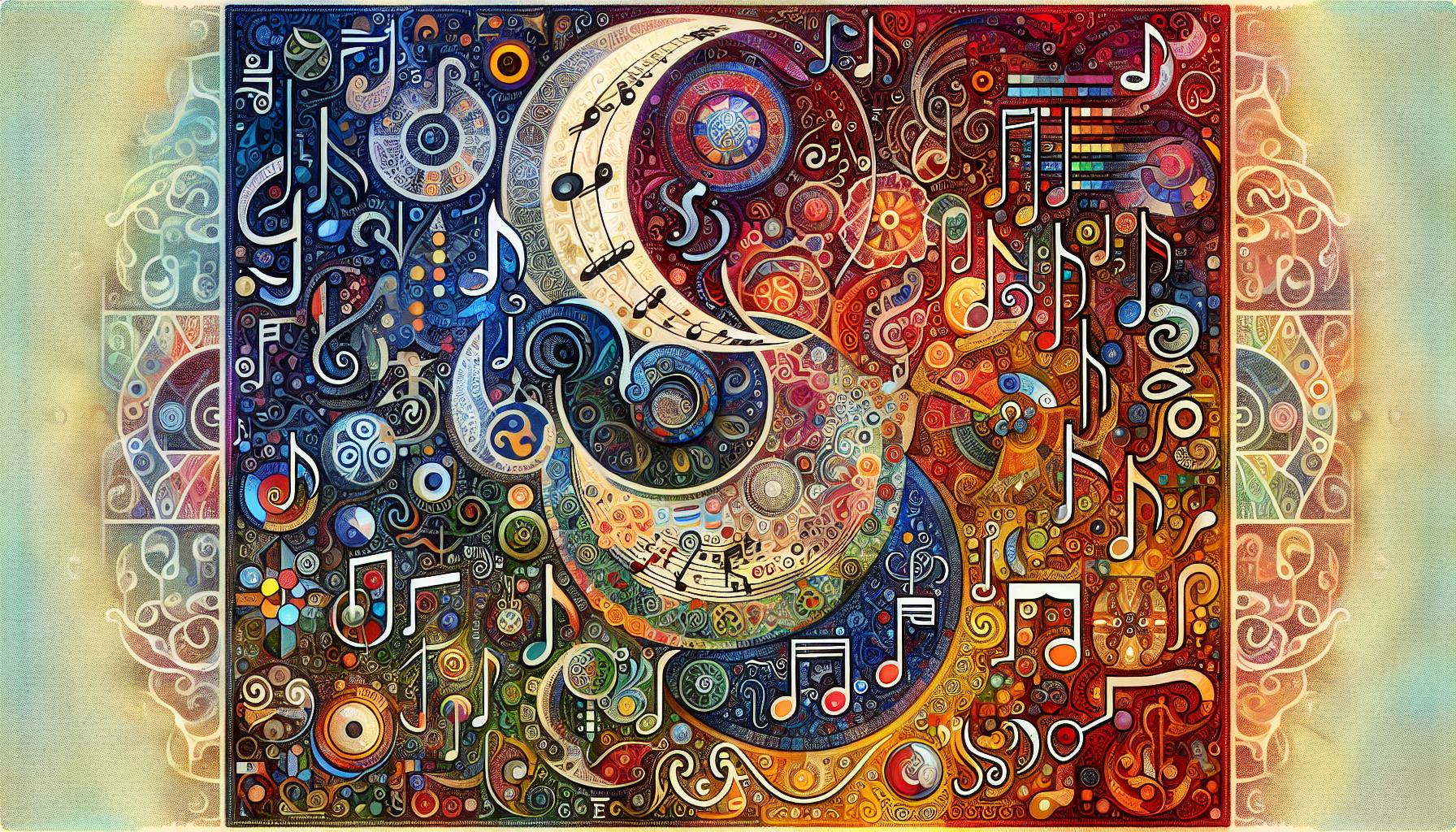Music is a universal language that transcends borders and cultures, captivating hearts and minds for centuries. At the core of this enchanting art form lies a fundamental question: how many musical notes are there? Understanding the structure of musical notes not only enhances appreciation for music but also opens the door to creativity for aspiring musicians.
From the familiar seven notes of the major scale to the intricate world of microtones, the variety of musical notes is both fascinating and complex. Each note carries its own unique sound and emotional weight, contributing to the rich tapestry of melodies that define genres and styles. Exploring this topic reveals the depth and diversity of musical expression, inviting readers to delve deeper into the world of sound.
Key Takeaways
- The Western music system consists of 12 distinct pitches, including seven natural notes (A, B, C, D, E, F, G) and five accidentals (C♯, D♯, F♯, G♯, A♯).
- Musical notes represent specific pitches and are crucial for creating melodies and harmonies, enhancing musical appreciation and creativity.
- Each musical note has unique characteristics that can affect the emotional expression in compositions, particularly through the use of different note types and values.
- Octaves play an essential role in music theory, signifying the relationship between notes that share the same name at different pitch levels.
- Microtones, used in various musical traditions like Indian and Arabic music, significantly expand the range and emotional depth of musical expression, beyond the Western 12-tone system.
- Understanding enharmonic equivalents, such as C♯ and D♭, is vital for musicians, offering flexibility in composition and facilitating key changes.
How Many Musical Notes Are There
Musical notes represent sounds with specific pitches, essential for creating melodies and harmonies. The Western music system primarily utilizes 12 distinct pitches, forming an octave. These pitches include seven natural notes and five accidentals, which help create depth and variation in music.
Natural Notes
Natural notes include:
- A
- B
- C
- D
- E
- F
- G
These notes form the foundation of melodies, with their positions determining overall harmonics.
Accidentals
Accidentals consist of:
- C♯ (C sharp)
- D♯ (D sharp)
- F♯ (F sharp)
- G♯ (G sharp)
- A♯ (A sharp)
These notes raise the pitch of a natural note by a half step, while their flat counterparts lower the pitch.
Microtones
Microtones expand the range of musical expression. These intervals exist between the 12-tone system’s pitches. Various cultures, such as Indian classical music, utilize microtones extensively, enhancing emotional depth and complexity.
| Type | Notes | Total |
|---|---|---|
| Natural | A, B, C, D, E, F, G | 7 |
| Accidentals | C♯, D♯, F♯, G♯, A♯ | 5 |
| Total Pitches | Natural + Accidentals | 12 |
Understanding these notes, their structures, and their variations provides insight into the diverse world of music, allowing artists to connect and innovate within their compositions.
The Basics of Musical Notation

Musical notation serves as the written language of music, enabling composers and performers to communicate effectively. Understanding its structure is essential for interpreting and creating music.
Types of Musical Notes
Musical notes differentiate sounds through pitch and duration. The seven primary notes in the Western musical system are A, B, C, D, E, F, and G. These notes can be modified with accidentals, including C♯, D♯, F♯, G♯, and A♯, allowing for variations in pitch. Each note affects melody and harmony uniquely. Examples of different note types include:
- Whole Notes: Represent four beats, serving as the longest duration in common use.
- Half Notes: Represent two beats, dividing the whole note’s duration.
- Quarter Notes: Represent one beat, further subdividing the rhythmic structure.
- Eighth Notes: Represent half a beat, allowing for faster rhythmic passages.
- Sixteenth Notes: Represent a quarter of a beat, creating rapid, intricate rhythms.
Note Values and Durations
Note values determine how long each note should be held. In Western music, this system assigns specific durations based on the type of note. Standard note values build on each other:
| Note Type | Symbol | Beats |
|---|---|---|
| Whole Note | O | 4 |
| Half Note | O with a stem | 2 |
| Quarter Note | O with a filled head | 1 |
| Eighth Note | O with a filled head and a single flag | 0.5 |
| Sixteenth Note | O with a filled head and two flags | 0.25 |
Composers utilize these values not only to create rhythms but also to convey the emotional dynamics of a piece. Understanding these elements equips musicians to interpret and perform music more effectively.
The Seven Natural Musical Notes

The seven natural musical notes form the basis of Western music, serving as essential building blocks for melodies and harmonies. Each note represents a specific pitch, contributing to the emotional expression within musical compositions.
The Concept of Octaves
Octaves play a crucial role in music theory, defining the relationship between notes that share the same name but exist at different pitch levels. When a note is played at a higher frequency, it is eight pitches above the original note, completing the octave. For example, playing an A note at one frequency and again at double that frequency produces an A an octave higher. This interval is fundamental in creating scales and understanding the structure of music.
Enharmonic Equivalents
Enharmonic equivalents refer to notes that sound identical but are named differently. For example, C♯ (C-sharp) and D♭ (D-flat) are enharmonically equivalent, as they occupy the same pitch on a keyboard. Understanding enharmonic equivalents is vital for musicians, as they enhance the flexibility of musical composition and provide options for modulation and key changes, crucial for developing more complex harmonies.
The Total Count of Musical Notes

The total count of musical notes varies across different musical systems. Understanding these systems aids in grasping music theory and its applications.
Western Music Scale
The Western music scale consists of 12 distinct pitches. This set includes seven natural notes: A, B, C, D, E, F, and G. It also incorporates five accidentals: C♯, D♯, F♯, G♯, and A♯. These pitches form the basis of Western melodies and harmonies. Each note can be altered by accidentals, which raise or lower the pitch by a half step. The concept of octaves allows for the same notes to repeat at different pitch levels, creating familiar sound patterns across compositions. Enharmonic equivalents further enrich this scale, representing notes that sound the same but are notated differently, such as C♯ and D♭.
Other Musical Traditions
Other musical traditions feature varying numbers of notes, enriching global music. Indian classical music, for example, includes 22 microtones within an octave, allowing for intricate melodies and emotional depth not found in Western music. Similarly, Arabic music utilizes a system of maqamat, consisting of numerous scales based on microtones that provide unique tonal colors. These cultural distinctions highlight the diversity in musical expression, expanding the comprehension of musical notes beyond the familiar Western framework.
Landscape of Sound That Transcends Cultural Boundaries
The exploration of musical notes reveals a fascinating landscape of sound that transcends cultural boundaries. From the foundational seven notes of the major scale to the intricate microtones found in various traditions, it’s clear that the world of music is rich and diverse. Each note carries its own emotional weight and significance, contributing to the overall tapestry of musical expression.
Understanding the different systems of musical notes not only enhances one’s appreciation of music but also opens doors to creativity and innovation. As musicians and listeners alike delve deeper into these concepts, they find new ways to connect with the universal language of music. The journey through musical notes is an invitation to explore and celebrate the beauty of sound in all its forms.